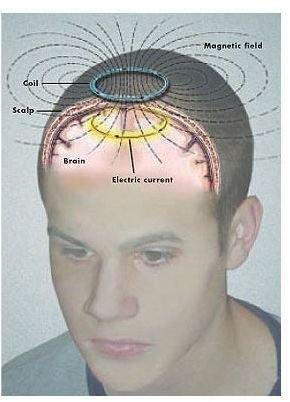What is Electromagnetism?
Electromagnetism is the branch of physics that deals with electricity and magnetism and the interaction between them. It was first discovered in the 19th century and has extensive application in today’s world of physics.
Electromagnetism is basically the science of electromagnetic fields. An electromagnetic field is the field produced by objects that are charged electrically. Radio waves, infrared waves, Ultraviolet waves, and x-rays are all electromagnetic fields in a certain range of frequency. Electricity is produced by the changing of magnetic field. The phenomenon is also called “electromagnetic induction.” Similarly the magnetic field is produced by motion of electric charges.
The basic law of electromagnetism is known as “Faraday’s law of Induction.” The phenomenon of electromagnetism was discovered in the 19th century, and this led to the discovery of the “special theory of relativity” by Albert Einstein. According to his theory, electric and magnetic fields could be converted into one another with a relative motion. This phenomenon and its applications were discovered because of the many contributions from great scientists and physicists such as Michael Faraday, James Clerk Maxwell, Oliver Heaviside, and Heinrich Hertz. In 1802, an Italian scholar demonstrated the relationship between electricity and magnetism by deflecting a magnetic needle with electrostatic charges.
Electromagnetism is basically a conjecture of a combined expression of an underlying force, known as “electromagnetic force.” This force can be seen when an electric charge is moving. This movement produces magnetism. This idea was presented by James Clerk Maxwell who published the theory of electricity and magnetism in 1865. Based on this theory many applications and other effects were discovered by other scientists. Electromagnetism has been extended to the area of quantum physics as well where light propagates as a wave and interacts as a particle.

It has been proved that electricity can give rise to magnetism and vice versa. A very simple example is that of an “electric transformer.” The exchanges take place inside the transformer that gives rise to electromagnetic waves. Another fact about these waves is that they do not need a medium to propagate although their speed is relatively slower when traveling through transparent substances.
Electromagnetic Waves
Electromagnetic waves were first discovered by James Clerk Maxwell and they were confirmed after wards by Heinrich Hertz. Afterward, a wave form of electric and magnetic equations was derived by Maxwell which showed that the electric and magnetic fields had wave-like nature. The factors which differentiate electromagnetic waves from each other are frequency, amplitude and polarization. For example, a laser beam is coherent and the radiation is of only one frequency. There are other types of waves varying with their frequencies such as radio waves which are at very low frequencies and gamma rays and x-rays of very high frequency. Electromagnetic waves can propagate to very long distances and they are not affected by any kind of obstacles whether they are huge walls or towers.
This special interaction of electricity and magnetism has led to great advancements in modern science and technology, and efforts are being made to discover more about electromagnetism and its applications. Other forces are gravitational forces, strong and weak forces. Electromagnetism has also been combined with the weak force which is known as “Electroweak force.”
Applications of Electromagnetism
Electromagnetism has numerous applications in today’s world of science and physics. The very basic application of electromagnetism is in the use of motors. The motor has a switch that continuously switches the polarity of the outside of motor. An electromagnet does the same thing. We can change the direction by simply reversing the current. The inside of the motor has an electromagnet, but the current is controlled in such a way that the outside magnet repels it.
Another very useful application of electromagnetism is the “CAT scan machine.” This machine is usually used in hospitals to diagnose a disease. As we know that current is present in our body and the stronger the current, the strong is the magnetic field. This scanning technology is able to pick up the magnetic fields, and it can be easily identified where there is a great amount of electrical activity inside the body.

The work of the human brain is based on electromagnetism. Electrical impulses cause the operations inside the brain and it has some magnetic field. When two magnetic fields cross each other inside the brain, interference occurs which is not healthy for the brain.
References
Applications of Electromagnetism, https://www.exampleessays.com/viewpaper/19454.html
Electromagnetism, https://www.lightandmatter.com/html_books/0sn/ch11/ch11.html
Electromagnetism, https://www.howmagnetswork.com/Electromagnetism.html